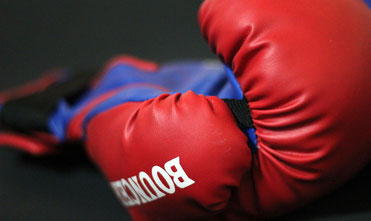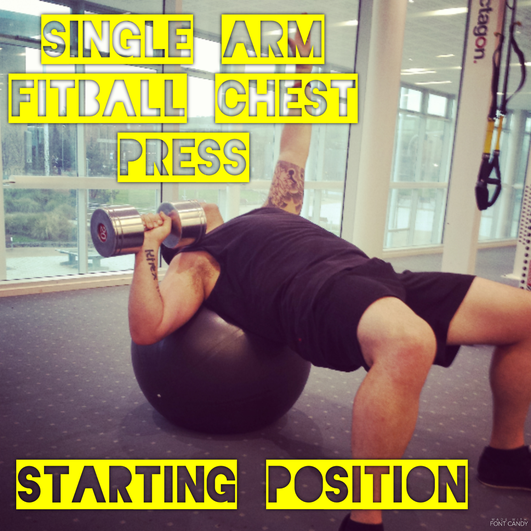Boxing Power Weights Program

Compensatory Acceleration Training
Compensatory Acceleration Training is a style of strength training whereby the lifter attempts to accelerate as much speed as they can while lifting a very high load.(In this case 85-90% of 1Rep max). The eccentric phase is done in slow and controlled manner.
There are two ways you can work out the weight you need to use for the specific percentage of 1 Rep Max .Firstly, find out the maximal weight you can lift for 1 rep of the exercise and then divide it by the percentage you want to lift (Example, 90% of 110kg is 99kgs). The danger with this method is the risk of injury lifting to your maximum. The second method is a submaximal lift, for example perform 5 reps to failure of the exercise then use a website calculator to work out the specific weight you will use for this style of training. Always warm up with at least 5min of light cardio exercise and 5min of mobility style bodyweight exercise.
http://www.exrx.net/Calculators/OneRepMax.html
If this is the first time using Compensatory Acceleration Training start with the higher end of the rep range (5 reps at 85% 1 RM). Also make sure you have mastered each exercise before you start lifting high loads at speed.
Adding CAT into your periodised programme
It’s not a good idea to just jump straight into low rep high load with acceleration training. All training carries some risk of injury, this is increased proportionally by the amount of tension place on your body. Compensatory Acceleration Training by its nature creates huge forced though out your body (High loads with attended speed). There is an increased risk of injury form this style of training.
I recommend using a linear periodisation programme to prepare you for this style of training. It will give you a chance to master the technical aspects of each lift and give your body a chance to slowly adapt to the high forces you will place on it. Design a 10 week programme using the same exercises split into 4 mesocycle blocks. Whenever you try a new training method for the first time, test it away from competition. Don’t use it leading up to a fight you want to see how it will affect you before using it in an important build up.
Example of Linear 10 week program
|
|
|
|
|
|
|---|---|---|---|---|
|
|
Conditioning
|
Strength Base
|
CAT
|
Recovery
|
|
Duration
|
3 weeks
|
3 weeks
|
3 weeks
|
1 week
|
|
Sessions
|
3 per week
|
2-3 per week
|
2 per week
|
2 sessions
|
|
Sets
|
4
|
4
|
5
|
4
|
|
Reps
|
12-8
|
8-6
|
5-3
|
15
|
|
Loads
|
65-75% 1 RM
|
75-85% 1RM
|
85-90% 1 RM
|
60% 1RM
|
|
Tempo*
|
2.2
|
1.2
|
X.2
|
1.2
|
|
Rest
|
60sec
|
90sec
|
90-180sec
|
60sec
|
Boxing Specific Strength Exercises
The exercises I have listed are not to be used as a standalone programme. They are an example of type of exercises I would recommend for a Boxer. Each individual has specific strengths, weaknesses and goals requiring their own specific periodised programme.
Before commencing any of these exercises seek clearance from a medical practitioner.
Exercises- Cable Horizontal Woodchop
A boxer needs rotational power to produce a powerful punch especially the hook and uppercut. The ability to produce power by rotating the hips and torso will generate maximal force. A woodchop style exercise closely resembles the particular rotational movement pattern. Although there are many variations of the woodchop the Horizontal Cable is one of best suited for compensatory acceleration training (CAT).
Starting position
Use an adjustable cable machine. Set the cable at chest height with a D shaped handle. Start with a split squat stance similar to your boxing stance. Have your right foot forward when you are twisting right to left and your left foot forward when you are twisting from the left to right. You can use your natural boxing stance for both directions. Though, I would recommend swapping feet to give you a stronger base of support while lifting near maximal loads. Activate your core, keep your chest up and keep your eyes in line with your hands. Foot position is set by standing perpendicular to the cable machine when you are halfway through the rotation.
Movement Phase
Compensatory acceleration training technique uses maximal acceleration with a very high load (85-90% 1RM). This will result in a high level of muscle tension produced from the exercise. You should try accelerating through the entire concentric phase (twisting the cable out). Then slowly control the handle back thought the eccentric phase to the starting position. Twist the cable using your whole body. Keep a slight bend in your arms throughout the whole exercise. Pivot on your feet to maintain balance. Keep your chest up and eyes on the handle. Breathe out on the concentric phase and breathe in on the eccentric phase.
One Arm Barbell Press with Split Squat
One of my favourite total body exercises. Great asymmetrical functional strength exercise which focuses heavily on lower body, core and shoulders. The split squat stance resembles a boxer’s unilateral stance. One of the most important physical skills for a boxer is to be able to transfer explosive force from their feet though the body finishing at the fist with the contact point.
Starting position
Using a Barbell Lever, start by lifting the bar up in a standing position. Slowly lower the bar on to one shoulder and move into a split squat stance. Have your opposite leg forward to the arm holding the bar. Keep your feet parallel and shoulder width apart. Hips should be facing straight ahead, chest up, Activate you core and eyes on horizon. You can use your free hand for balance or have it in the guard position.
Movement Phase
Explode up into the finishing position using your lower body and upper body at the same time. You can also add some torso rotation to produce maximal force. Breathe in as you lower the bar in a slow and control fashion. Breathe out as you drive the barbell up. Focus on using you calf muscle on the back foot to help transfer momentum into the barbell. Keep your chest up and eyes on horizon. Slowly lower the bar to the starting position.
Fitball One Arm Dumbbell Chess Press
Some Boxers believe the chest is the main provider of power in a punch. In fact it’s only one of a long chain of muscles, ligament and tendons that produce a punch. Another mistake you often see in gyms is the overuse of Flat Bench Barbell Press. Boxing uses unilateral movement, to get the most out of your training you should concentrate on asymmetrical exercises. There are more specific boxing strength chest exercises, like standing one cable press or standing barbell lever one arm chest press. I have added the Fitball exercise to give some variation from the standing exercises I have already listed.
This is a unilateral exercise which also allows you to add torso rotation. The shape of the Fitball allows you integrate your torso, chest and arms into one movement. This movement pattern is a lot healthier for your shoulders then using a ridged flat bench.
Starting Position
Firstly find a good quality Fitball with no visible damage. With the loads you will be using you don’t want one of these ball popping. Find a large safe clear area to perform the exercise. Start by sitting on the Fitball with the Dumbbell in one hand on your thighs. Slowly roll down the Fitball until you are in the starting position. Keep your hips up and level with your body. Start with the dumbbell next to your shoulder and your elbow slightly down towards your body. Your opposite arm should be raised in the air. Keep your eyes focused on the ceiling. Have you feet spaced shoulder width apart for stability.
Movement Phase
Drive the Dumbbell up using your entire body. Not only do you want to press the dumbbell up with your arm you also want to twist using your torso. Breathe out as your drive the dumbbell up in the concentric phase, breathe in on the eccentric phase. Keep your eyes on the dumbbell throughout the entire movement.
High Bar Step Up
This is an advanced exercise using a high bar position with a high load. This one should only be used by experienced lifters. Your need flexibly and stability with your shoulder and neck. If you are a beginner or have shoulder or neck issues, I would recommend positioning the barbell on your upper back (Similar to a back squat).
Using a high bar position will move your natural centre of mass higher up the body. The higher centre of mass during a unilateral exercise increases the demands on balance. A boxer generates a lot of power though the calves so I have added the heel raise at the end of the lift to focus on this area.
Starting Position
Make sure you have plenty of room to do this exercise. Stand in front of the step and snatch the barbell into a high bar position. Keep your chest up and eyes on horizon. Place foot on top of the step and keep it there for the entire set. Slowly lower into a split squat stance, feet should be parallel and shoulder width apart.
Movement Phase
Drive forward and up from the lunge raising your knee up so your leg is at least parallel to the floor. At the top of the lift come up onto the ball of your foot by driving with your calf muscles.
Finishing Position
Keep your arms locked in the high bar position, chess up and eyes on horizon though the entire lift. Breathe out as your drive up and forward breathe in as you slowly come back down to the starting position.
Richard Leonard BSc Sports and Exercise Science
Personal Trainer
M: 07511468490
Web: Personal Training Clifton
E: rlbodytrainer@gmail.com
Facebook: https://www.facebook.com/rlbodytrainer
Twitter: @LesmillsPT









